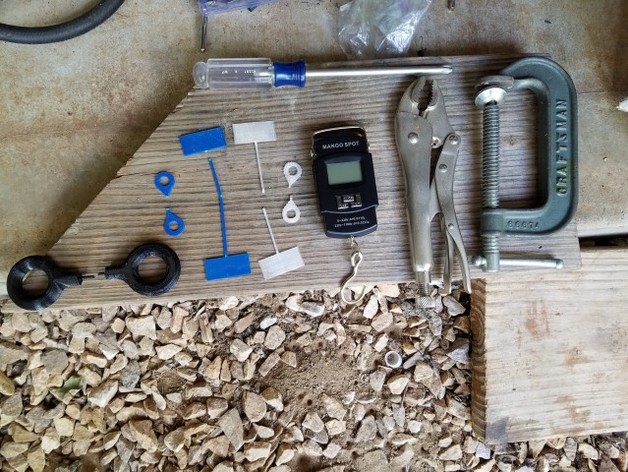
Project: Strength of Materials
thingiverse
When designing useful things to be 3D printed with plastic, you quickly realize that material properties are crucial. Plastics have a wide range of tensile strength, hardness, modulus of elasticity, and many other important characteristics. Two classic engineering tests are the tensile strength break test and the compression strength break test. For this project, we will conduct some material testing. Print Settings Printer: Generic Prusa i3 Rafts: No Supports: Yes Resolution: 0.2mm Infill: 100% Notes: I printed with 100% infill for these parts; 30-40% infill should be sufficient. Remember to make the part that will break solid by adjusting your shell thickness. I tested my prints on several different printers, including a Prusa with PETG, a Fabrikator with ABS loaded, and a Replicator with Makerbot PLA. Designing This I identified some properties I wanted to test for and then researched preliminary numbers on the plastics I was using. In my photos and videos: Black = PETG Blue = ABS Clear = PLA I designed pieces with a cross-section that should break within the range of my spring scale. I also considered breaking each piece in a concentrated location. Loaded up Fusion 360, sketched out some cross sections, and created thing files for reference. The large breakers are available for those with professional breaking equipment like universities use. Standards NGSS CCSS Overview and Background Material strength is key to designing parts that can withstand stress. I've already designed some 3D printed parts that failed spectacularly; see the photo below. To gain a practical understanding of material strength, students can participate in pushing materials to their limits by testing them to failure. Objectives Learn how to calculate cross-sectional area. Understand what material properties are (e.g., tensile strength, modulus of elasticity, compressive strength). See how material strength works hand-in-hand with design loads for a finished product. Learn how to test and calculate material strength. Audience Main application: STEM of all ages, High school physics, college physics lab, materials science, engineering. Anyone can benefit from this project; the demonstration is enlightening for all ages. Standards MP.4 - Model with mathematics. (HS-ETS1-1), (HS-ETS1-2), (HS-ETS1-3), (HS-ETS1-4) RST.11-12.9 - Synthesize information from a range of sources into a coherent understanding of a process, phenomenon, or concept, resolving conflicting information when possible. Lesson Plan and Activity Step 1 - Background and Knowledge Discuss materials science and material properties. Review cross sections and how to calculate their area. Explain how breaking tests show real-world material properties. Print and use one or more pieces as a visualization aid. Using published material properties for the materials you're 3D printing, develop an estimated break strength for the visual aids. Step 2 - Design and/or Build Option 1: Have students design a piece to break and print it. Option 2: Print the thing files. Step 3 - Practical Testing Option 1: Weigh all the pieces and measure them; record results. Assemble the breaking setup. The piece to be broken needs to be anchored securely, if breaking the point load piece, the anchor should have less strength to resist the test. If breaking the bigger pieces, you'll need an anchor with more resistance strength - I used a farm disc or harrow for my anchor. Anchor -> breaking piece
With this file you will be able to print Project: Strength of Materials with your 3D printer. Click on the button and save the file on your computer to work, edit or customize your design. You can also find more 3D designs for printers on Project: Strength of Materials.
